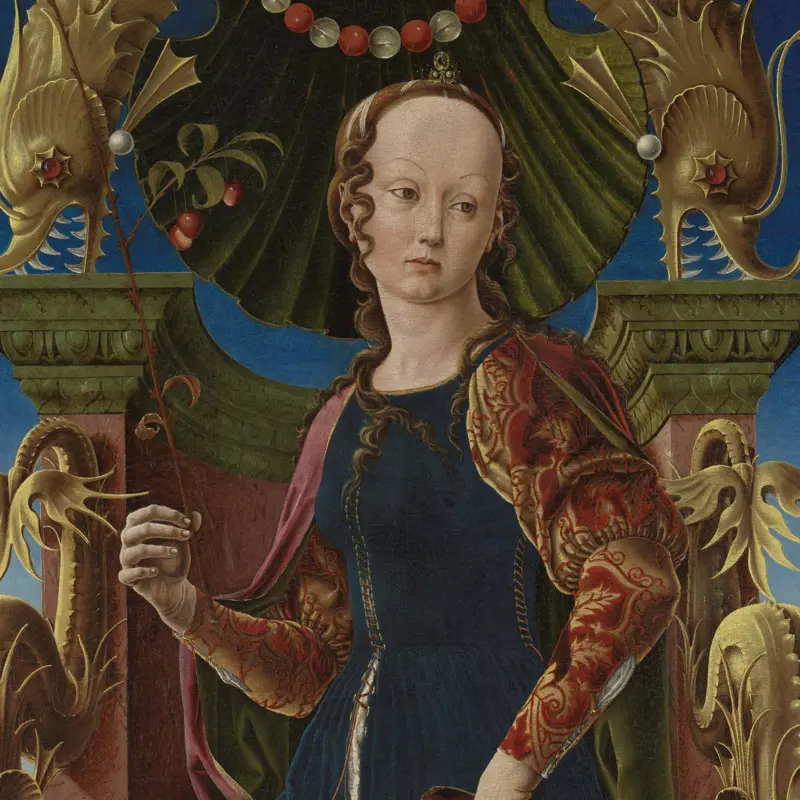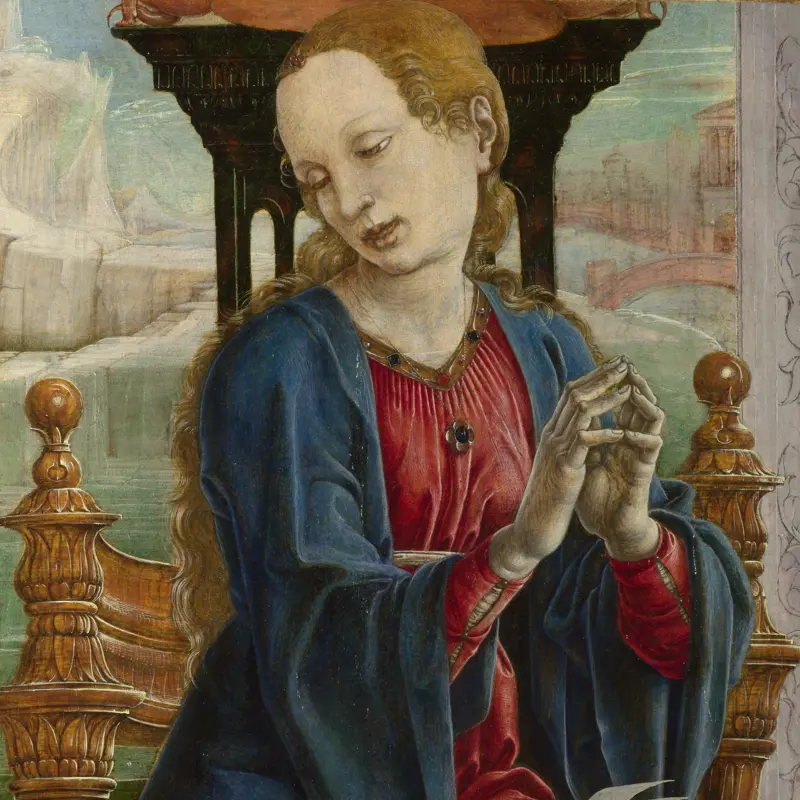Cosimo Tura, 'Saint Jerome', probably about 1470
About the work
Overview
Saint Jerome spent two years in the desert, living a life of poverty and self-denial. As a punishment for sinful thoughts, he would – as we see here – beat his body until it bled. He was originally shown looking towards a vision of Christ, arms outstretched on a cross made of beams of light. This fragment is now in the Pinacoteca di Brera, Milan.
The painting may have been commissioned as inspiration for a Franciscan confraternity whose members, like Saint Jerome, practised self-flagellation, with the aim of bringing themselves closer to Christ through imitation of his sufferings. Their founder, Saint Francis, is visible in the background kneeling beside a man in a red tunic, probably the panel’s patron.
Tura’s underdrawing is visible beneath the paint surface. He used multiple parallel strokes to indicate areas in shadow, applying a dark wash over the top, and – unusual in an underdrawing – used touches of white paint to highlight areas that catch the light.
Key facts
Details
- Full title
- Saint Jerome
- Artist
- Cosimo Tura
- Artist dates
- before 1431 - 1495
- Date made
- probably about 1470
- Medium and support
- oil with some egg tempera on wood
- Dimensions
- 101 × 57.2 cm
- Acquisition credit
- Bought, 1867
- Inventory number
- NG773
- Location
- Room 59
- Collection
- Main Collection
- Previous owners
- Frame
- 20th-century Replica Frame
Provenance
Additional information
Text extracted from the ‘Provenance’ section of the catalogue entry in Martin Davies, ‘National Gallery Catalogues: The Earlier Italian Schools’, London 1986; for further information, see the full catalogue entry.
Bibliography
-
1951Davies, Martin, National Gallery Catalogues: The Earlier Italian Schools, London 1951
-
1986Davies, Martin, National Gallery Catalogues: The Earlier Italian Schools, revised edn, London 1986
-
2001
C. Baker and T. Henry, The National Gallery: Complete Illustrated Catalogue, London 2001
About this record
If you know more about this work or have spotted an error, please contact us. Please note that exhibition histories are listed from 2009 onwards. Bibliographies may not be complete; more comprehensive information is available in the National Gallery Library.



